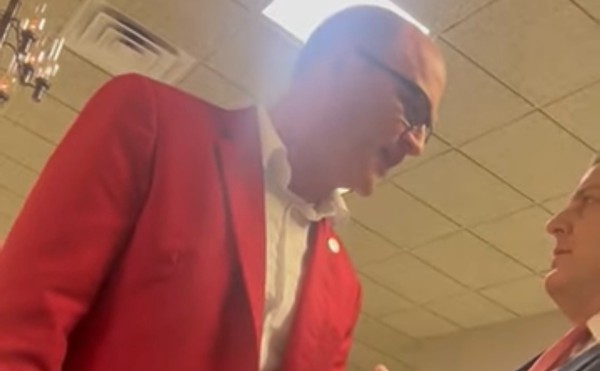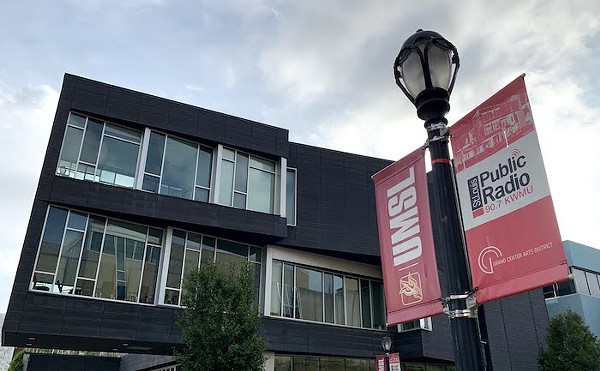L.W. had just begun his freshman year at Roosevelt High School in September 2014 when he got into a fight with a group of seniors in the cafeteria. Police were called, and when officials with the St. Louis Public Schools reviewed the incident, they labeled it a "group fight."
They also determined that L.W. should be placed in an alternative education program at Beaumont High School. But his mother objected, and so the assistant superintendent decided instead to place him in Roosevelt's virtual education program.
In the program, students spent three hours each school day moving through online course material at their own pace under the supervision of a "credit recovery facilitator." But the placement did not last long. On the second day, L.W.'s mother received a call from the school instructing her to take him home because he had allegedly stolen bus tickets from a cabinet in the room. The district recommended expulsion, but after additional back and forth between district officials and the student's mother, who now had an attorney, the district informed the parent that he would be "physically suspended" from school.
With that, L.W. began participation in a remote virtual-education program. The district told his mother that he could take classes via a home computer using curriculum provided by K12 Inc., one of the largest virtual-education companies in the United States. Nevermind that the family didn't have internet access: He could go to the public library.
The number of virtual programs for high school students has increased significantly in recent years. During the 2011-12 school year, there were 311 full-time virtual schools across the U.S. and about 200,000 students enrolled; four years later, 278,000 students are enrolled in 528 full-time virtual schools, the majority of them run by for-profit companies like K12, according to the National Education Policy Center, or NEPC, a research center at the University of Colorado- Boulder.
The growth of virtual schools, promoted as a way to make public education more efficient, has occurred despite the fact that many of their pupils, like L.W., often have difficulty learning when the classes are taught entirely online.
"They assign this kid to this online program as their way to rid themselves of this obligation to teach children," says NEPC's Michael K. Barbour. "But the evidence is overwhelming that these programs are not working."
It wasn't teachers who dreamed up K12, which generally employs a much higher student-to-teacher ratio than traditional brick-and-mortar schools. Ronald J. Packard, a former Goldman Sachs banker, started the company in 2000 with $10 million from Larry Ellison, the chief executive of Oracle Corp., a maker of computer software and hardware, and Michael Milken, a junk-bond financier who famously pleaded guilty to securities fraud in 1990 before becoming an education philanthropist.
The company's cofounder, former U.S. Secretary of Education William J. Bennett, resigned from the board in 2005 after saying on a radio show that aborting black babies would result in a lower crime rate. (In the same segment, he called that idea "morally reprehensible" and later described it as a "thought experiment.")
As the company has grown, performance data has raised questions about whether virtual schools are actually an effective use of public money.
For example, a 2017 NEPC report states that only 37.4 percent of full-time virtual schools received acceptable performance ratings, according to data from eighteen state agencies that provided such ratings. (Missouri was not included in that study.) That compares with a 72 percent acceptable performance rating among "blended" schools, meaning places that combined virtual education and face-to-face activity. And the on-time graduation rate for students in virtual schools was 43 percent, compared with a national average of 82 percent for public schools.
"These for-profit entities go up to 200 students per teacher because [the courses] are all self-guided and students go at their own pace, and what happens is these kids aren't disciplined," says Gary Miron, a professor at Western Michigan University who studies education policy and was an author of the 2017 report.
Despite those figures, officials like U.S. Secretary of Education Betsy DeVos have continued to promote virtual schools. In response to a written question from Senator Patty Murray (D-Washington), about the poor performance of virtual schools, DeVos countered with seven such schools around the country that boasted graduation rates over 90 percent. Those numbers proved to be significantly inflated over actual state data and lifted from a report published by K12, which ran those schools, National Public Radio reported.
"High quality virtual charter schools provide valuable options to families, particularly those who live in rural areas where brick-and-mortar schools might not have the capacity to provide the range of courses or other educational experiences for students," DeVos wrote to Murray. "Because of this, we must be careful not to brand an entire category of schools as failing students."






